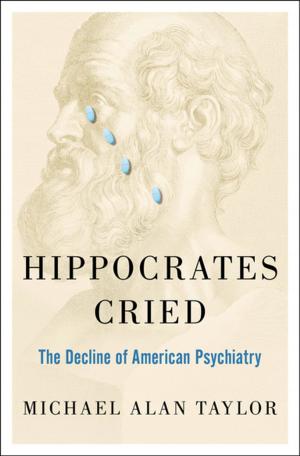How to Combat Recession
Stimulus without Debt
Business & Finance, Economics, Macroeconomics, Nonfiction, Social & Cultural Studies, Political Science, Politics, Economic Policy| Author: | Laurence Seidman | ISBN: | 9780190462192 |
| Publisher: | Oxford University Press | Publication: | May 7, 2018 |
| Imprint: | Oxford University Press | Language: | English |
| Author: | Laurence Seidman |
| ISBN: | 9780190462192 |
| Publisher: | Oxford University Press |
| Publication: | May 7, 2018 |
| Imprint: | Oxford University Press |
| Language: | English |
Recessions are a recurring phenomenon and there are repeated debates about how to combat them when the crisis hits and after the economy begins to grow again. Laurence Seidman argues that currently we are not ready to combat the next recession. A recession involves a plunge in aggregate demand for goods and services which compels producers to cut production and employment. Fortunately, a large boost in demand can be achieved by a large fiscal stimulus-primarily a temporary large increase in tax rebates for households plus several fiscal supplements. But fiscal stimulus has always involved a large increase in government debt, something Congress understandably resists. The assumption that a large fiscal stimulus requires an increase in government debt is false, Seidman asserts in this thought-provoking book. In fact, it is astonishingly easy to implement even a very large fiscal stimulus without any increase in government debt. All it takes is for Congress to enact a fiscal stimulus and the Federal Reserve to make a transfer (not loan) to the Treasury roughly equal to the fiscal stimulus so the Treasury doesn't have to borrow. Stimulus-without-debt consists of a transfer (not loan) from the Federal Reserve to the Treasury so that the Treasury does not have to borrow to finance fiscal stimulus enacted by Congress. Seidman explains all aspects of this new way to combat recession, "stimulus-without-debt." He presents evidence that fiscal stimulus works in a recession-it increases aggregate demand which stimulates production and employment. He explains why the fiscal stimulus should consist primarily of tax rebates for households plus several fiscal supplements. His analysis covers basic foundations as well as implications for inflation, central banks, and how to address secular stagnation. When the next recession hits, we will be ready to combat it if we know how to use fiscal stimulus without increasing government debt. Seidman shows us how.
Recessions are a recurring phenomenon and there are repeated debates about how to combat them when the crisis hits and after the economy begins to grow again. Laurence Seidman argues that currently we are not ready to combat the next recession. A recession involves a plunge in aggregate demand for goods and services which compels producers to cut production and employment. Fortunately, a large boost in demand can be achieved by a large fiscal stimulus-primarily a temporary large increase in tax rebates for households plus several fiscal supplements. But fiscal stimulus has always involved a large increase in government debt, something Congress understandably resists. The assumption that a large fiscal stimulus requires an increase in government debt is false, Seidman asserts in this thought-provoking book. In fact, it is astonishingly easy to implement even a very large fiscal stimulus without any increase in government debt. All it takes is for Congress to enact a fiscal stimulus and the Federal Reserve to make a transfer (not loan) to the Treasury roughly equal to the fiscal stimulus so the Treasury doesn't have to borrow. Stimulus-without-debt consists of a transfer (not loan) from the Federal Reserve to the Treasury so that the Treasury does not have to borrow to finance fiscal stimulus enacted by Congress. Seidman explains all aspects of this new way to combat recession, "stimulus-without-debt." He presents evidence that fiscal stimulus works in a recession-it increases aggregate demand which stimulates production and employment. He explains why the fiscal stimulus should consist primarily of tax rebates for households plus several fiscal supplements. His analysis covers basic foundations as well as implications for inflation, central banks, and how to address secular stagnation. When the next recession hits, we will be ready to combat it if we know how to use fiscal stimulus without increasing government debt. Seidman shows us how.















